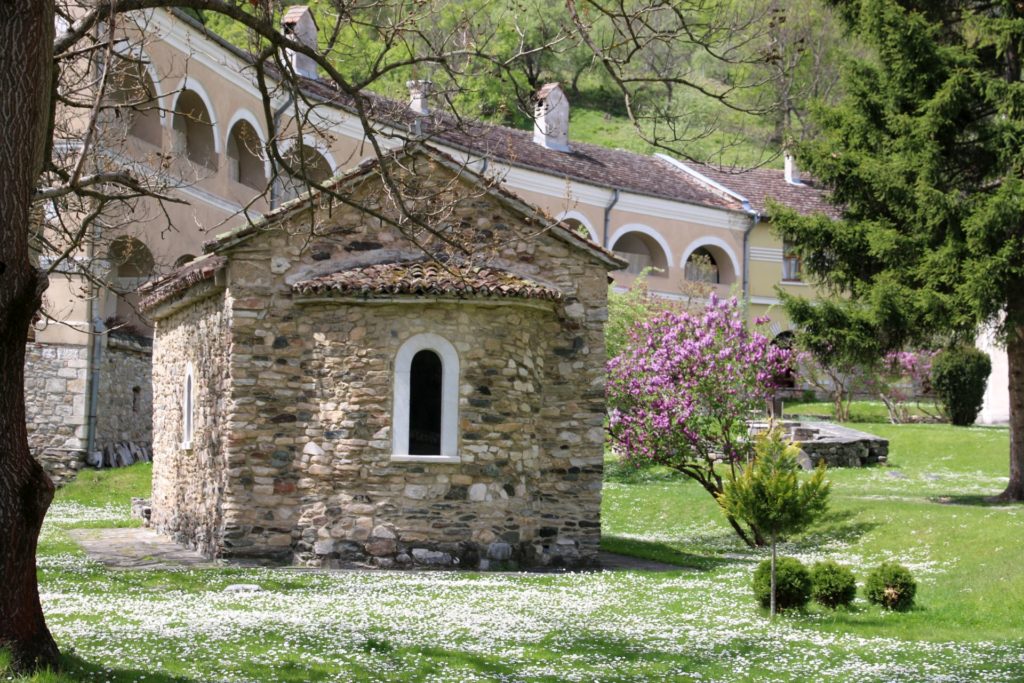 Did you know that – apart from Egypt and France – Serbia has its own Valley of Kings? It is the valley of the Ibar river, situated between the towns of Novi Pazar and Raška. This is the place where the first medieval Serbian state was founded and where the kings of the Nemanjić dynasty built their monasteries. It is also called Valley of Lilacs. Why? Well, the story says that, once upon a time, the Serbian King Uroš I Nemanjić ordered that lilacs should be planted along the valley as a token of his love to his wife Helen of Anjou…
Did you know that – apart from Egypt and France – Serbia has its own Valley of Kings? It is the valley of the Ibar river, situated between the towns of Novi Pazar and Raška. This is the place where the first medieval Serbian state was founded and where the kings of the Nemanjić dynasty built their monasteries. It is also called Valley of Lilacs. Why? Well, the story says that, once upon a time, the Serbian King Uroš I Nemanjić ordered that lilacs should be planted along the valley as a token of his love to his wife Helen of Anjou…
The monasteries in the Valley of Kings are among the most beautiful Orthodox monasteries in Eastern Europe. No wonder that several of them were put on the list of UNESCO World Heritage sites, while other ones are part of the tentative UNESCO list.
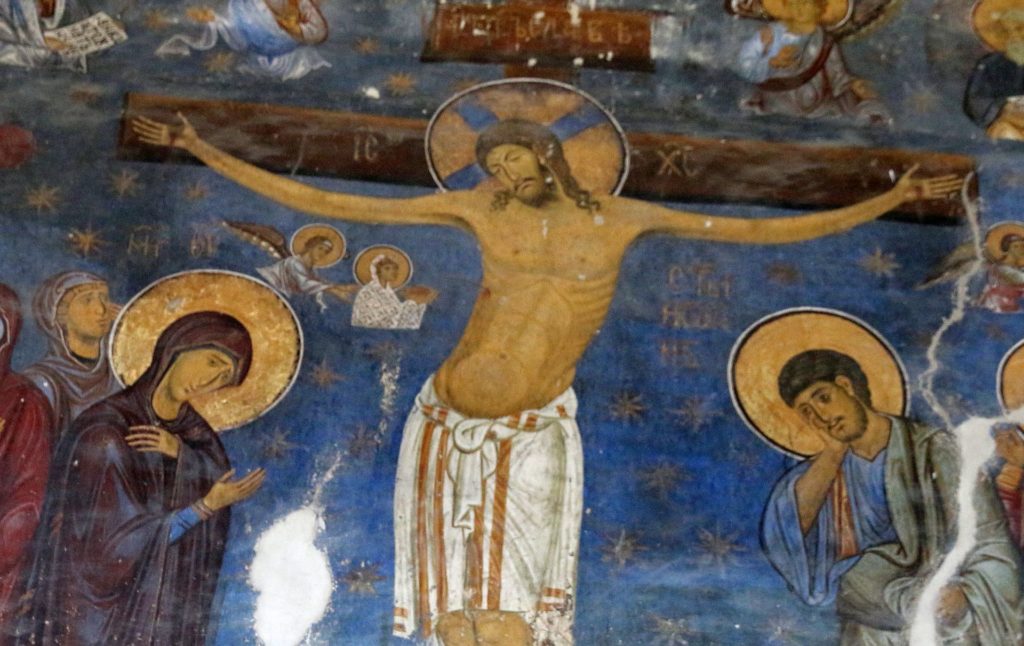 One of the best preserved and most impressive monasteries is Studenica. When we visited it early in May, we were pleasantly surprised to find a wonderful monastery garden, full of flowers. Although we have seen many medieval monasteries in the Balkans, we found the atmosphere in and around this holy place particularly solemn and mystic.
One of the best preserved and most impressive monasteries is Studenica. When we visited it early in May, we were pleasantly surprised to find a wonderful monastery garden, full of flowers. Although we have seen many medieval monasteries in the Balkans, we found the atmosphere in and around this holy place particularly solemn and mystic.
The complex is located among forested mountains, on the right bank of the Studenica river. Its history goes back to the 12th century, when it was built by Stefan Nemanja, the founder of the Serbian state. Of course, that is one of the reasons why Studenica is considered to be the most important of Serbia’s monasteries. Stefan’s youngest son St. Sava became its first prior. He also founded the Byzantine monastery hospital that worked from 1207 to 1216: a medical institution in the real sense of the word.
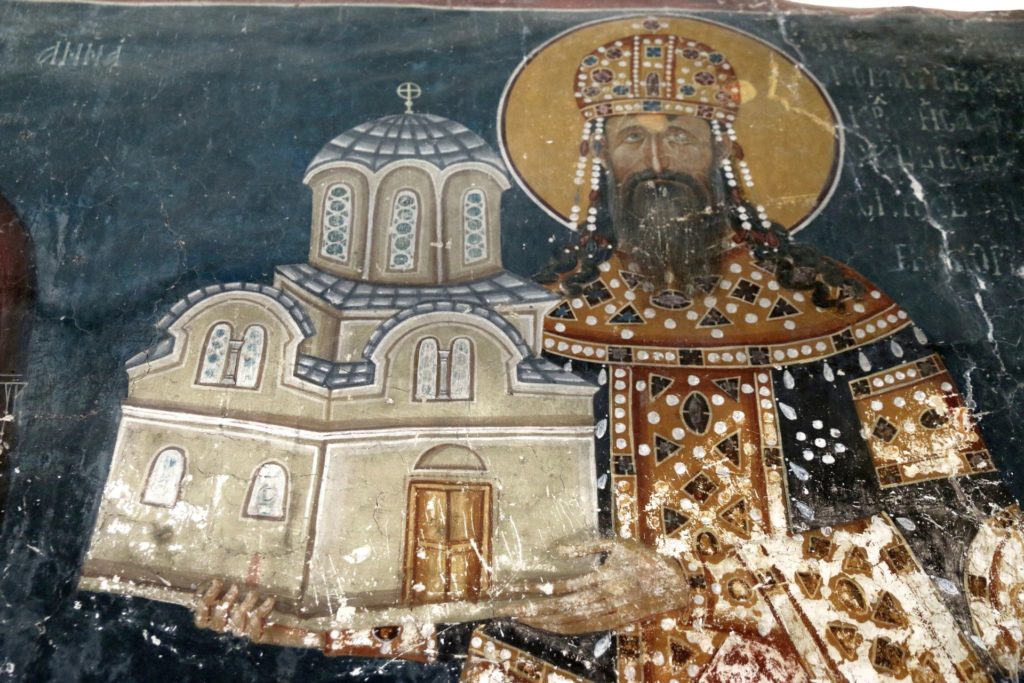 The architecture of the Studenica Monastery, its murals and frescoes, are a mixture of the old Raška school, Byzantine and western styles. The monastery complex consists of three churches and several other buildings, and it is surrounded by high protective walls.
The architecture of the Studenica Monastery, its murals and frescoes, are a mixture of the old Raška school, Byzantine and western styles. The monastery complex consists of three churches and several other buildings, and it is surrounded by high protective walls.
The smallest church, made of stone, is dedicated to St. Nicholas and is also called „Nikoljača“ (photo 2).
The King’s Church, built in 1314 as an endowment of King Milutin, contains exceptionally refined wall paintings, like for instance the Cycle of the Life of the Virgin Mary, one of the world’s leading examples of Byzantine art from that time.
“The Crucifixion of Jesus Christ”, painted in 1208/1209, is one of the most significant examples of medieval art in Europe (photo 3). The story goes that the painter used very expensive materials for the unique blue color used for this mural painting: he paid one kilo of silver for one kilo of this special pigment. I could hardly believe that this painting is more than 800 years old!
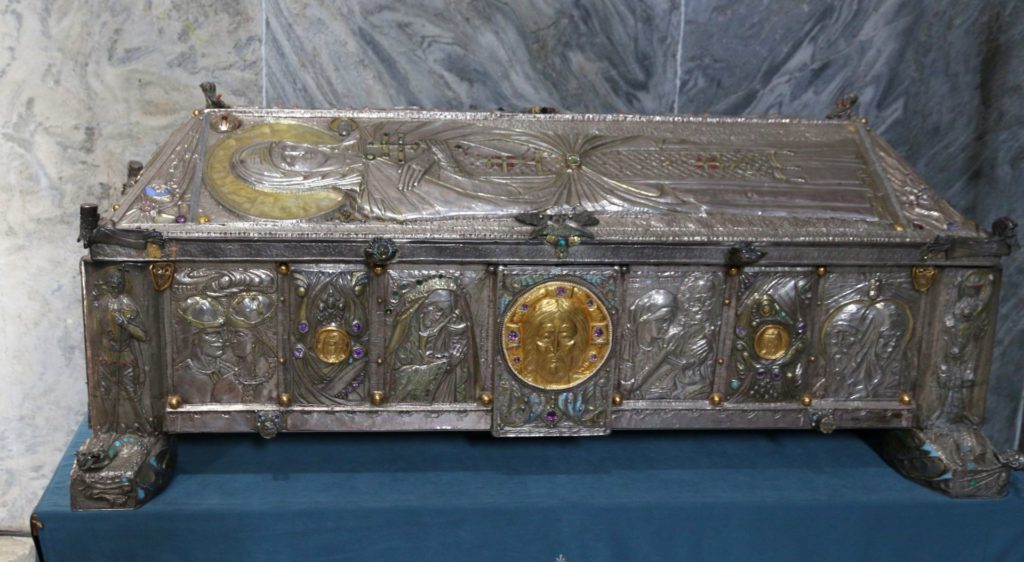 Another beautiful fresco is the depiction of King Milutin himself, holding a model of King’s Church (photo 4).
Another beautiful fresco is the depiction of King Milutin himself, holding a model of King’s Church (photo 4).
Central to the complex is the Church of Our Lady, made polished bluish marble with Romanesque and Byzantine influences. It was built around 1190 and contains beautiful sarcophagi with the relics of St. Anastasia, the mother of St. Sava (photo 5) and St. Sava’s brother, St. Simon the Monk. Intricately sculpted Romanesque style figures and mythological creatures decorate the portals and windows of the church (photo 6). Inside, the walls are covered with impressive 13th and 14th-century Byzantine frescoes.
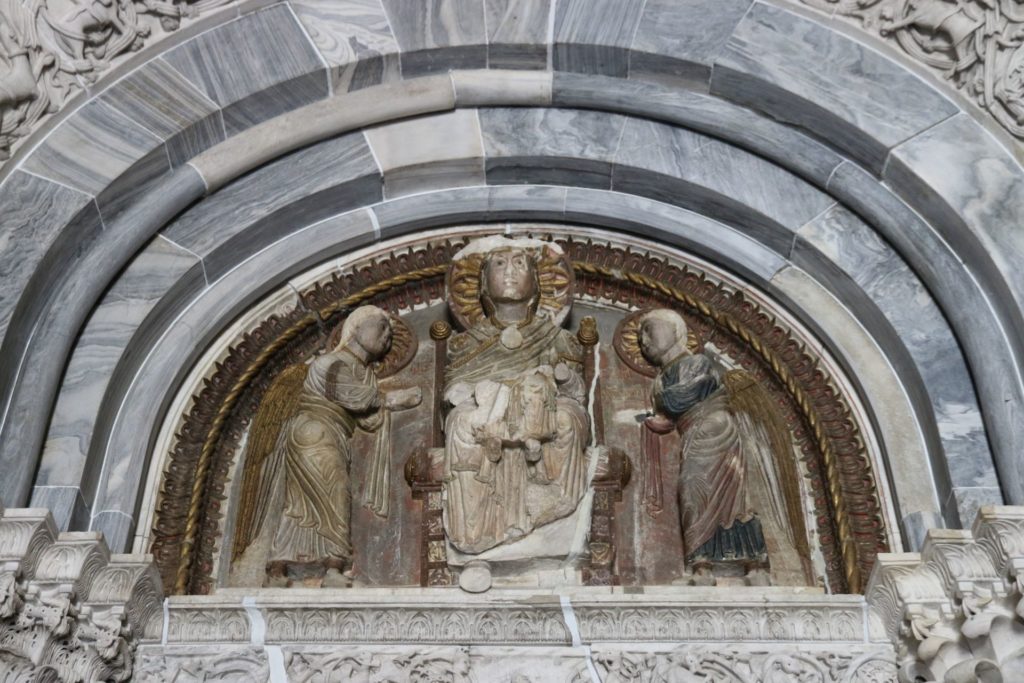 Other interesting buildings are the West Tower, a bell tower from the 12th century (photo 7), the Karađorđević family habitat from 1911 and the refectory or dining room of St. Sava. The defense wall of the monastery is oval in shape, but unfortunately, nowadays only fragments of the walls can be seen.
Other interesting buildings are the West Tower, a bell tower from the 12th century (photo 7), the Karađorđević family habitat from 1911 and the refectory or dining room of St. Sava. The defense wall of the monastery is oval in shape, but unfortunately, nowadays only fragments of the walls can be seen.
Although the Studenica monastery was robbed, burned and vandalized many times, it has retained its original function and it was successfully restored. In 1986 it got a deserved place on the UNESCO World Heritage List.
It is also interesting to mention that the Studenica monastery is located on the international Transromanica Cultural Route. Transromanica – the Romanesque Route of European Heritage – represents the common Romanesque heritage of eight countries in Europe between the Baltic and the Mediterranean Sea and was introduced by UNESCO and the Council of Europe. This route is getting more and more popular and will certainly have a great impact on tourism development in Serbia!

